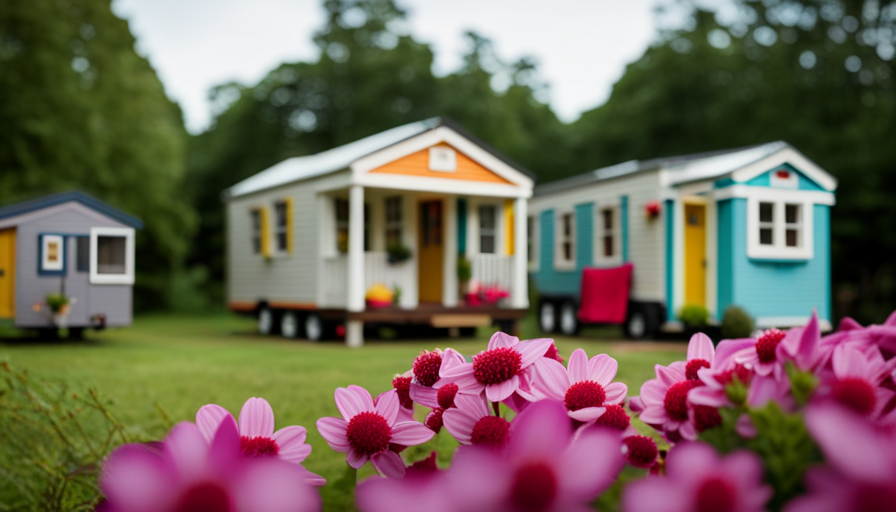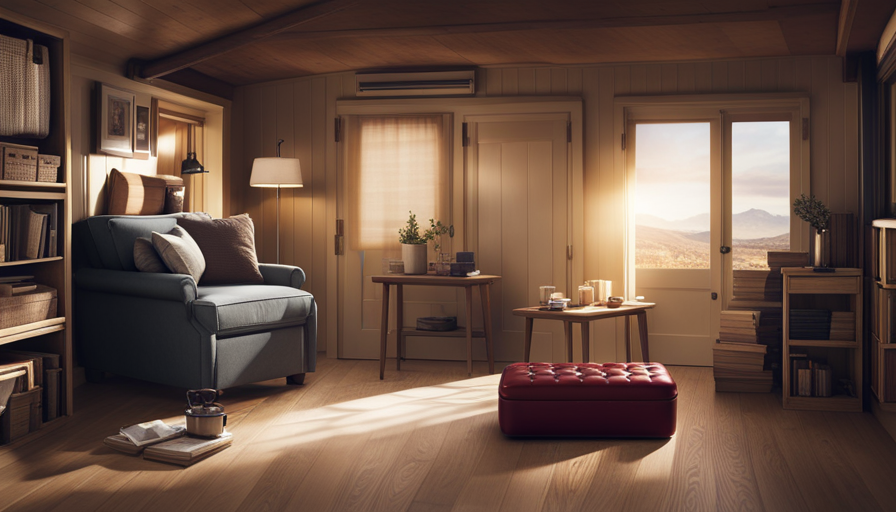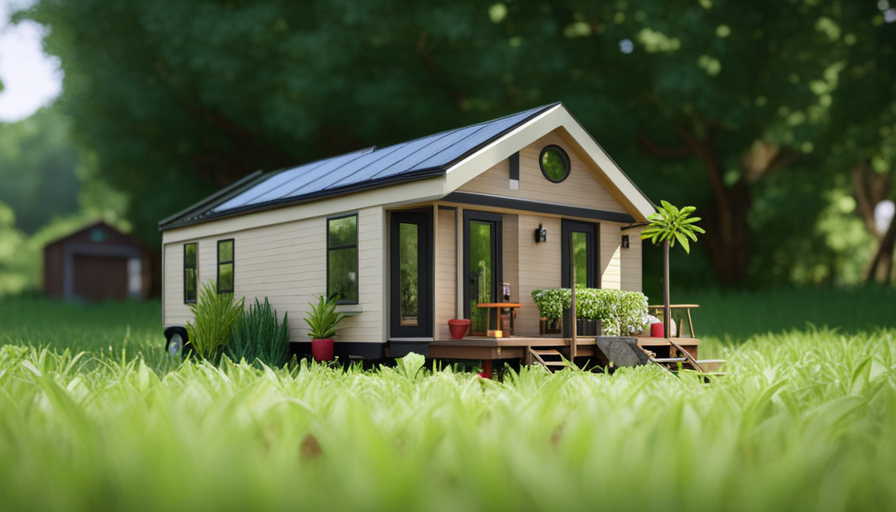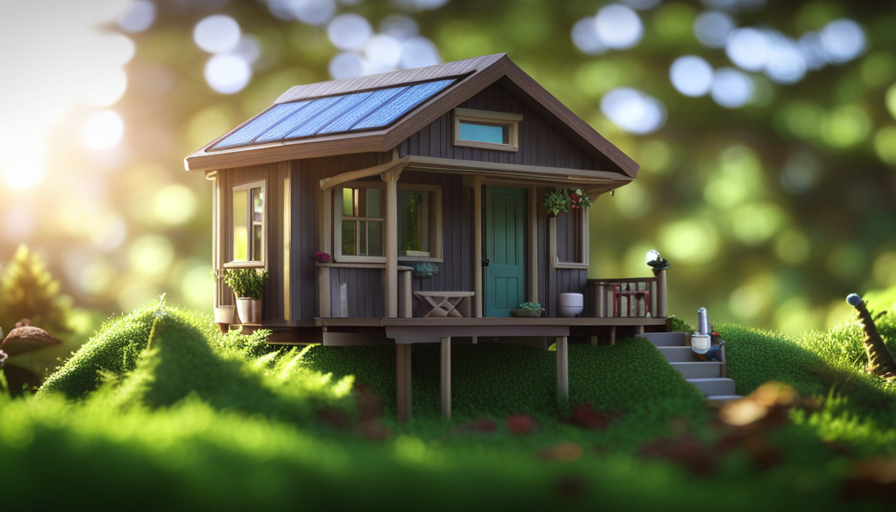Do you ever fantasize about making your life more straightforward, reducing your possessions, and becoming part of a community that values minimalism and sustainability? The Dictate Who Tiny House Community is precisely what you’ve been searching for. This distinctive and lively community provides a sanctuary for those aiming for a more simplified lifestyle, all centered around the concept of tiny living.
In this article, I will explore the benefits of tiny living, the process of joining a like-minded community, and the financial considerations involved. We will also delve into the challenges of tiny living and provide tips for thriving in a tiny house community.
Whether you’re a minimalist at heart or simply seeking a more sustainable lifestyle, the Dictate Who Tiny House Community offers a world of possibilities. So, join me as we embark on a journey into the fascinating world of tiny living.
Key Takeaways
- Tiny house communities offer a simpler way of living and provide a supportive and like-minded community for individuals.
- Tiny living promotes sustainable living, reduces carbon footprint, and encourages a minimalist lifestyle.
- Financial considerations include budgeting for essentials and the potential for financial independence.
- Challenges of tiny living include limited space and the need to maintain privacy and boundaries, which can be addressed through proper planning and open communication.
The Benefits of Tiny Living
Living in a tiny house offers a multitude of benefits that make it an incredibly appealing lifestyle choice. One of the most significant advantages is sustainable living. Tiny houses require fewer resources to build and maintain, resulting in a smaller carbon footprint. They typically use less energy for heating and cooling, and many owners opt for renewable energy sources like solar panels.
Additionally, tiny houses promote a minimalist lifestyle, encouraging individuals to live with less and reduce their consumption of material goods. Another benefit of tiny living is increased mobility. These compact homes are often built on wheels, allowing owners to easily move and explore different locations. Whether it’s a desire for travel or a need for flexibility, tiny houses provide the opportunity to live a more nomadic lifestyle.
Transitioning into joining a like-minded community, tiny living fosters connections with others who share similar values and aspirations.
Joining a Like-Minded Community
Immerse yourself in a close-knit neighborhood, where connections bloom like wildflowers in a lively garden. Joining a like-minded community is a key aspect of the tiny house lifestyle, offering not only support but also an opportunity to create a sustainable way of living.
Here are four reasons why finding community support is essential:
-
Shared Resources: In a tiny house community, neighbors often share tools, appliances, and even garden space, reducing waste and promoting efficiency.
-
Emotional Support: Living in a tiny house can sometimes be challenging, but having a supportive community around can provide encouragement and help navigate any difficulties.
-
Learning Opportunities: Communities often organize workshops and events, where members can share their expertise on topics like sustainable living, minimalism, and DIY projects.
-
Collaboration: Collaborative projects like community gardens or renewable energy initiatives are common in tiny house communities, fostering a spirit of cooperation and creating a positive impact on the environment.
By finding community support and embracing a sustainable lifestyle, you can embark on a fulfilling tiny house journey.
Transitioning into the next section, let’s explore the important factors to consider when choosing the right tiny house.
Choosing the Right Tiny House
Discovering the perfect tiny home that resonates with your soul and aligns with your values will ignite a sense of excitement and fulfillment within you. One of the advantages of choosing a tiny house is the ability to customize it to your liking. From layout to design, you have the freedom to create a space that suits your individual needs and preferences.
Many companies offer a wide range of customizing options, allowing you to personalize every aspect of your tiny home. Additionally, when selecting a tiny house, it’s important to consider eco-friendly materials. Opting for sustainable and energy-efficient materials not only reduces your carbon footprint but also ensures a healthier living environment. By prioritizing eco-friendly choices, you contribute to the well-being of the planet and yourself.
As you explore the various tiny house options, it’s crucial to also consider the financial considerations that come with this lifestyle transition.
Financial Considerations
When it comes to embracing tiny living, it’s important to consider the financial implications of this lifestyle transition. Budgeting is a key aspect of successfully living in a tiny house.
With limited space, it’s crucial to carefully allocate funds for essentials such as utilities, maintenance, and insurance. Additionally, downsizing to a tiny house can lead to financial independence. By reducing living expenses, individuals can save more money and potentially pay off debts or work towards long-term financial goals.
However, it’s essential to have a realistic understanding of the costs involved in tiny living and to create a comprehensive budget that covers all necessary expenses. By doing so, individuals can fully enjoy the benefits of financial freedom that come with living in a tiny house.
Transitioning to tiny living does present some challenges, but with proper planning and preparation, these obstacles can be overcome.
Overcoming Challenges of Tiny Living
When living in a tiny house, I’ve found that dealing with limited space can be quite challenging. It requires careful organization and creative storage solutions to make the most out of every inch.
Additionally, maintaining privacy and boundaries can be a struggle, especially when living in close proximity to others.
However, adapting to a minimalist lifestyle has been a rewarding experience. It’s allowed me to focus on what truly matters and let go of unnecessary possessions.
Dealing with Limited Space
Living in a tiny house community, you’ll quickly learn how to maximize limited space to create a comfortable and functional living environment. Maximizing storage becomes crucial in such a small space. Creative design solutions are essential to make the most of every inch.
Utilizing vertical space with shelves and hooks helps keep belongings organized and easily accessible. Multifunctional furniture, like a bed with built-in storage or a table that folds down when not in use, can also maximize space. Additionally, using clever storage solutions such as under-bed storage bins or utilizing wall space for hanging items can greatly increase storage capacity. These strategies allow for more room to move around and create a sense of openness.
Transitioning into the next section about maintaining privacy and boundaries, it’s important to establish personal spaces within the community without compromising the limited space available.
Maintaining Privacy and Boundaries
To truly make your tiny space feel like home, it’s important to establish personal boundaries and create a sense of privacy within the community. Setting boundaries is crucial when living in close proximity to others. One way to do this is by clearly defining your personal space and communicating your expectations to your neighbors.
Using curtains, screens, or dividers can also help create physical boundaries within your tiny house. Additionally, it’s important to respect the boundaries of others and be mindful of noise levels and shared spaces.
Maintaining personal space in a tiny house community requires open communication, mutual respect, and a willingness to compromise. By doing so, you can create a harmonious living environment where everyone feels comfortable and respected.
Moving on to the next topic, adapting to a minimalist lifestyle can be a transformative experience.
Adapting to a Minimalist Lifestyle
Embracing a minimalist lifestyle can lead to a profound transformation in one’s daily habits and mindset. By focusing on minimalist decor and maximizing storage, individuals in tiny house communities are able to create a sense of spaciousness and simplicity in their living spaces. Minimalist decor often involves clean lines, neutral colors, and a deliberate lack of clutter. This aesthetic not only creates a calming environment, but also allows for easier maintenance and cleaning. Maximizing storage is crucial in tiny houses, and residents often utilize creative solutions such as built-in shelving, hidden compartments, and multi-purpose furniture. These practical strategies help to make the most of limited space. Transitioning into the next section about ‘tips for living in a tiny house community’, it is important to consider how adapting to a minimalist lifestyle can positively impact one’s overall experience.
Tips for Living in a Tiny House Community
When you join a tiny house community, you’ll quickly discover the importance of connection and collaboration with your neighbors. Living in a tiny house community comes with its own set of community guidelines and building regulations that dictate how you can live within the community. These guidelines ensure that everyone respects each other’s privacy and maintains a clean and safe environment.
It’s important to familiarize yourself with these rules and regulations to ensure a harmonious living experience. Additionally, being part of a tiny house community provides opportunities for collaboration and resource sharing. You can learn from your neighbors’ experiences and expertise, and together, you can find creative solutions to common challenges.
Exploring the world of tiny living is an exciting journey that allows you to experience a simpler and more sustainable way of life.
Exploring the World of Tiny Living
Living in a small space can be a doorway to discovering a more minimalist and sustainable lifestyle. It’s an opportunity to explore the world of tiny living and embrace a simpler way of life.
When designing tiny homes, there are endless possibilities to create a functional and cozy space. From loft beds to hidden storage solutions, every inch can be optimized for maximum efficiency.
Additionally, living in a tiny house community opens up alternative living options. It allows individuals to connect with like-minded people who value small footprint living and sustainability. It’s a chance to share resources and ideas, creating a supportive and inspiring community.
Tiny living is not just about the physical space, but also about embracing a mindset that values experiences over possessions and focuses on living a more intentional and fulfilling life.
Frequently Asked Questions
What are the zoning and legal requirements for building a tiny house in a specific area?
Zoning regulations and legal permits are essential when building a tiny house in a specific area. To ensure compliance, one must research and understand the local zoning laws, which dictate where and how a tiny house can be built.
Additionally, obtaining the necessary legal permits is crucial. These permits vary depending on the location and may include building permits, electrical permits, and plumbing permits.
It’s important to consult with local authorities and professionals to navigate these requirements successfully.
How do I find land to park my tiny house on in a specific location?
Finding suitable land for a tiny house community in a specific location can be challenging, but with some research and effort, it’s possible to find the perfect spot. Here are a few ideas for discussion that are not directly related to the other H2s listed above:
- Financing options for purchasing land
- Strategies for negotiating with landowners or local authorities to secure a location
It’s important to explore different options and consider factors such as zoning regulations and community support to ensure a successful outcome.
What are the options for utilities (water, electricity, sewage) for a tiny house community?
Off-grid options for utilities in a tiny house community include rainwater collection systems, solar panels for electricity, and composting toilets for sewage. These options allow for self-sufficiency and reduce reliance on traditional utility services. However, it’s important to consider the initial cost of setting up these systems, as well as ongoing maintenance and potential limitations in terms of water and electricity usage.
Are there any restrictions on the size or design of tiny houses within the community?
Size regulations and design guidelines are important considerations within a tiny house community. These regulations ensure uniformity and maintain the aesthetics of the community. Typically, there are restrictions on the size of the tiny houses to ensure they meet certain size criteria.
Design guidelines may also be in place to ensure that the houses fit within a specific architectural style or theme. These regulations and guidelines help create a cohesive and harmonious living environment within the community.
How can I ensure the safety and security of my tiny house and belongings within the community?
To ensure the safety and security of my tiny house and belongings within the community, I can take several security measures.
Firstly, I can install a reliable alarm system and secure doors and windows.
Additionally, I can engage with the community by participating in neighborhood watch programs or forming a security committee.
Building relationships with my neighbors and staying vigilant can help create a safe and secure environment for everyone in the community.
Conclusion
In conclusion, living in a tiny house community can truly be a transformative experience. The benefits of tiny living, such as reduced environmental impact and financial freedom, are undeniable. Joining a like-minded community adds a sense of belonging and support.
Choosing the right tiny house is crucial, as it’ll determine your comfort and functionality. Financial considerations are important to ensure a stress-free lifestyle. While there may be challenges, such as limited space and privacy, they can be overcome with creativity and adaptability.
So why not explore the world of tiny living and see if it’s the right fit for you? After all, as the saying goes, "good things come in small packages."
Hi, I’m Emma. I’m the Editor in Chief of Tiny House 43, a blog all about tiny houses. While tree houses are often associated with childhood, they can be the perfect adult retreat. They offer a cozy space to relax and unwind, surrounded by nature. And since they’re typically built on stilts or raised platforms, they offer stunning views that traditional homes simply can’t match. If you’re looking for a unique and romantic getaway, a tree house tiny house might just be the perfect option.










